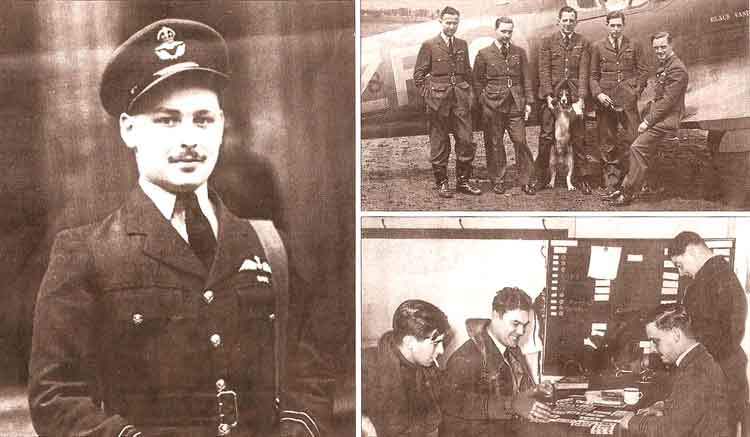
Freeborn with fellow pilots of No. 74 Squadron (top right) and (right, with moustache) killing time waiting to scramble. He never lost his affection for Tadcaster ale.
WING COMMANDER JOHN FREEBORN, who has died aged 90, was one of the RAF's leading fighter "aces" in the Battle of Britain, during which he flew more operational hours than any other pilot.
Freeborn had already seen much action before the Battle. Flying Spitfires with 74 (Tiger) Squadron, he was heavily engaged in the air fighting during the retreat of the British Expeditionary Force to Dunkirk in May 1940.
Over a six-day period, the squadron accounted for 19 enemy aircraft, two shot down by Freeborn. On one occasion his Spitfire was badly damaged and he crash-landed on the beach near Calais but managed to get a lift home in a returning aircraft.
On July 10, the opening day of the Battle, Freeborn shot, down a Messerschmitt Bf 109 over Deal. For the next few weeks he flew continuously and his successes mounted.
On August 11 he flew four missions in eight hours and probably a fourth. Two days later he shot down a Dornier bomber, and later in the day learnt that he had been awarded the DFC for his "high courage and exceptional abilities as a leader".
He was appointed a flight commander and by the end of the Battle on October 31 had been credited with shooting down at least seven aircraft in addition to his earlier successes over Dunkirk.
No 74 Squadron remained in the front line, and by the end of November Freeborn had been with the squadron longer than any other Battle of Britain pilot. In December he shot down two more Bf 109s and damaged others.
Then, in early 1941, Fighter Command went on the offensive, with Freeborn flying sweeps over northern France. At the end of February he was awarded a Bar to his DFC, the citation confirming that he had destroyed 12 enemy aircraft and damaged others. He was rested in June, having served on No 74 Squadron for almost three years.
John Connell Freeborn was born at Middleton, Yorkshire, on December 1 1919, and educated at Leeds Grammar School. He joined the RAF in March 1938 and, after training: as a pilot, joined No 74 Squadron to fly Gauntlet biplane fighters before the squadron was re-equipped with the Spitfire.
On September 6 1939 Freeborn was at the centre of a tragic "friendly fire" incident when, ground controllers plotting incoming aircraft scrambled the Spitfires of No 74 Squadron from Hornchurch in Essex. Due to a series of misunderstandings, the squadron commander ordered his pilots to attack. In fact the detected aircraft were returning Hurricanes that had been scrambled against a "phantom raid". Freeborn shot down the Hurricane of Pilot Officer Montague Hulton-Harrop, who was killed. A second Hurricane was shot down by a pilot of No. 74 Squadron.
The two pilots were court- martialled but acquitted of any liability or blame, despite their squadron commander testifying against them. The "Battle of Barking Creek", as this incident was later to become known, led to a complete review of Fighter Command's plotting system.
After his long period with No 74 Squadron, Freeborn instructed new pilots on fighter tactics before taking up a post in the United States as a flying instructor. He also tested the latest American fighters.
He returned to operational flying in 1943, when he flew Spitfires with No. 602 Squadron, providing fighter escort to RAF bombers attacking shipping and port installations. On June 1 he was given command of No 118 Squadron, flying in a similar role.
Freeborn was promoted to become one of the RAF's youngest wing commanders and spent the first six months of 1944 commanding 286 Wing, flying operations from southern Italy in support of the Allied armies.
This was a period of intense activity, as the RAF attacked German installations and convoys in the Balkans and provided defence for Allied convoys in Italian waters. He returned to Britain in late 1944 and left the RAF in 1946.
After qualifying as a driving instructor, Freeborn was invited to join Tetley Walker as regional director for their Minster soft drinks brand. He took early retirement, and in the early 1980s moved to Spain. In 2000 he came back to Britain, settling in north Wales.
Self-confident to the point of bloody-mindedness, Freeborn was always happy to express his opinions. As an 18-year old he had once informed his CO that he could outfly him, and his brushes with authority made for a colourful life both in the RAF and elsewhere. He never lost his affection for his native Yorkshire, nor for a pint of Tadcaster ale.
Although he had been cleared of any blame for the death of Montague Hulton-Harrop in 1939, the death of a fellow fighter pilot in such circumstances was always in his thoughts. Shortly before his death Freeborn admitted: "I think about him nearly every day. I always have done. I've had a good life - and he should have had a good life, too."
Freeborn's life story was the subject of A Tiger's Tale, written by Bob Cossey and published in 2002. His autobiography, Tiger Club, co-written with Christopher Yeoman, came out last year.
John Freeborn died on August 28. He married, in 1941, Rita Fielder. She died in 1979, and he married, secondly, Peta in 1983. She predeceased him in 2001, and he is survived by a daughter from his first marriage.
(Obituary by kind permission of the Daily Telegraph published on Wednesday 15th September, 2010.)
Final tribute to a true war hero
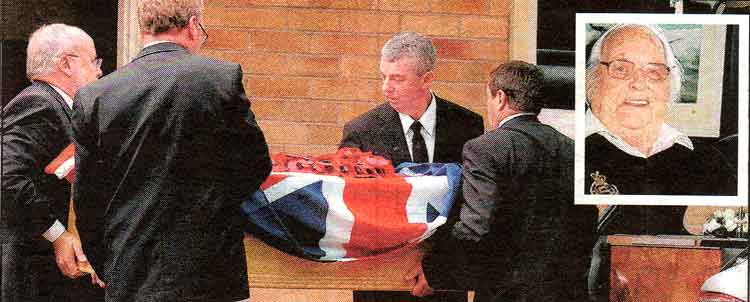
The coffin of Wing Commander John Freeborn (inset) is carried into South Southporttorium
By GEMMA JALEEL
THE incredible life of one of Britain's greatest war time heroes was celebrated as Wing Commander John Freeborn was laid to rest at Southport Crematorium.
Wg Cdr Freeborn who died on Saturday aged 90, flew more operational hours than any other RAF pilot during the Battle of Britain. Family, friends and fellow airmen all paid tribute during a moving service which saw Freeborn's coffin draped in a Union Jack with a wreath made of poppies.
Squadron Leader Tony Pickering flew with Freeborn many times when he was stationed at Gravesend and John was at Biggin Hill.
He said: "John was a strong disciplinarian and at first we all thought he was a bit rough. He even shouted at me when I was an officer but it was his discipline which saved people's lives. He was a very good Flight Commander and an exceptional pilot."
Rev Malcolm Dyer, who led the service, praised John's free spirited nature which often saw him clash with RAF authorities.
He said: "John had a fierce desire to be independent. He found the discipline of school irksome and for many of us he exemplified what we know as the 'Colditz Spirit'. The few have got much fewer and it is pretty clear they broke the mould with John."
Wg Cdr Freeborn moved to Southport around a decade ago and was very active in raising money for charity and attending reunions of his various squadrons. Wilf Crutchley who served in 118 Squadron gave a moving eulogy about his close friend.
- He said: "During his RAF Career he flew 42 different types of aircraft and he even visited Hollywood on his leave where he was a big hit with the stars, especially the ladies".
Close friend Bob Cossey, who authored Freeborn's biography A Tiger's Tale, said: "He was a role model and hero to many and younger members of the squadron loved hearing his stories. He did not see eye to eye with officers and he was certainly no saint but his integrity as a pilot was without question.
(Obituary by kind permission of the Southport Visitor published on Saturday 10th September, 2010.)
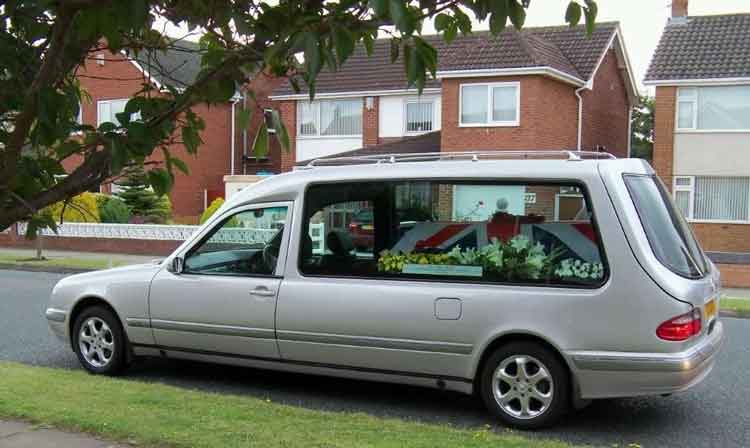
John's Coffin and hearse Tuesday 7th September 2010. (Thanks to Wilf Crutchley
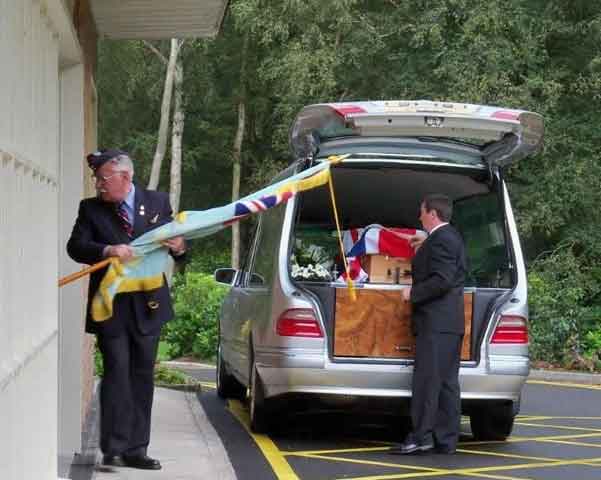
John's coffin arriving at the Southport Crematorium - Tuesday 7th September 2010. (Thanks to Wilf Crutchley
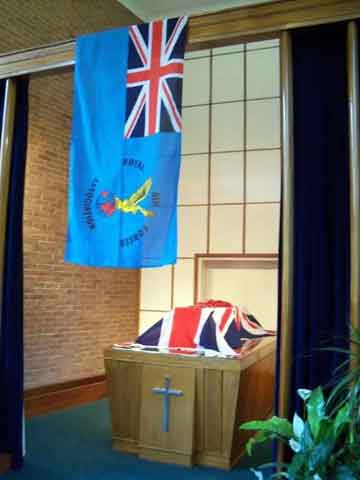
John's coffin draped with the Union Jack at Southport Crematorium - Tuesday 7th September 2010. (Thanks to Wilf Crutchley
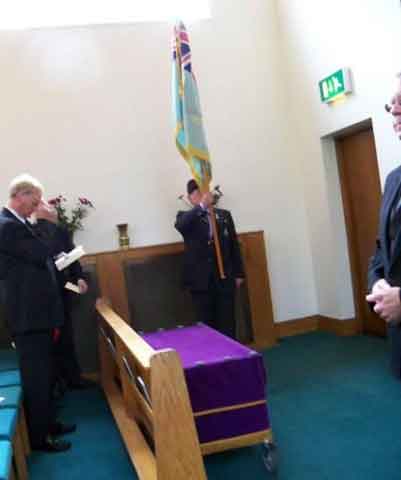
RAF Association Colours at John's funeral at the Southport Crematorium - Tue 7Sep10. (Thanks to Wilf Crutchley
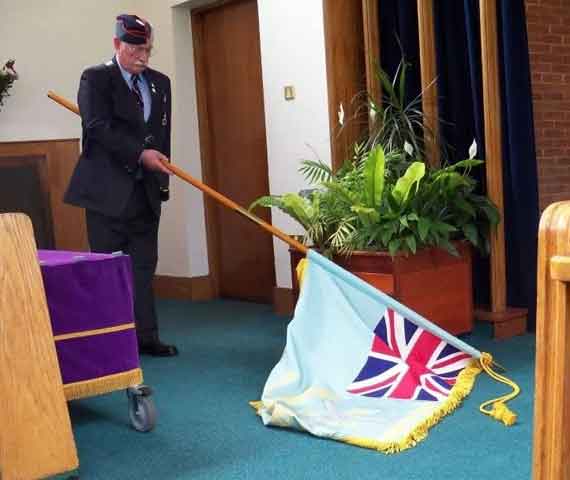
Dipping the RAF Ensign in salute to John Freeborn at his funeral at Southport Crematorium - Tuesday 7th September 2010.
(Thanks to Wilf Crutchley
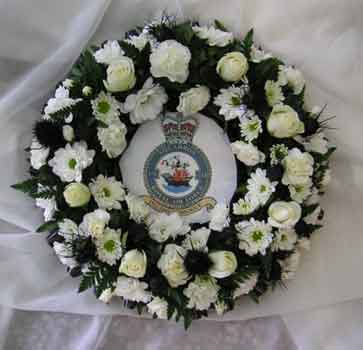 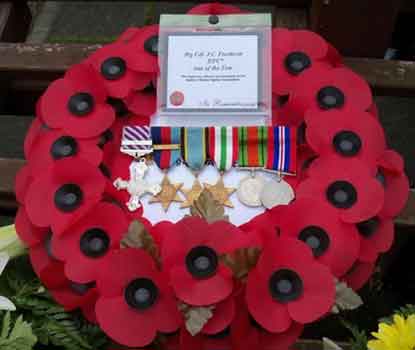
Wreath from 118 Sqn left and Wreath with John's medals on the right - 7sep10. (Thanks to Wilf Crutchley.)
Obituary from the Yorkshire Post:
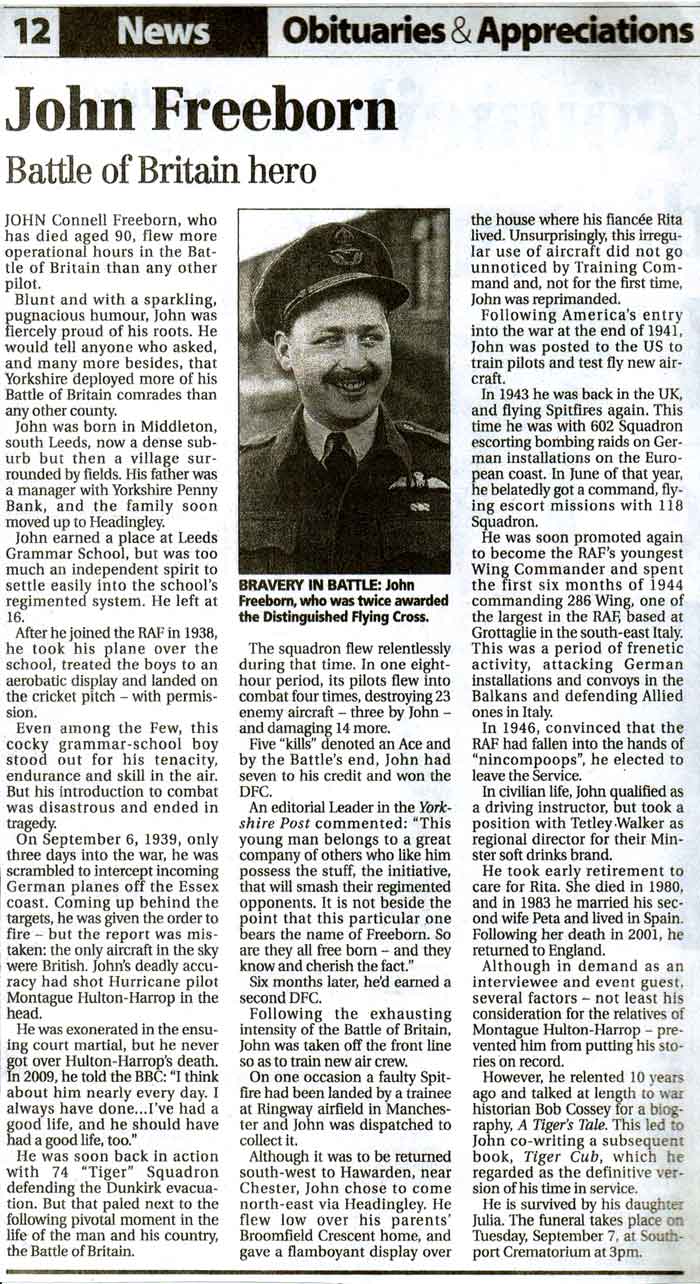
Laurence Lewin from Santa Ana, California has added the following tribute to John Freeborn:
"I had been corresponding with John Freeborn since being introduced to him by a game designer who had interviewed John in the course of researching the production of "The Burning Blue." John was kind enough to respond to a letter and our correspondence continued for about 2 years, leading to an invitation to attend the reunion. We stayed in touch and this was a fulfillment of my life long interest in the Battle of Britain, Spitfires, the RAF and most things British.
When John died, I wanted remember him, and through John, symbolically, the heroes of my childhood, who had stood against the murderous force of Nazi Germany, and played a major role in preserving democracy, facing the bullets and bombs while I was a pre-schooler in Chicago, oblivious of their sacrifice. I saw the website of Mark Styling, Aviation Illustrated and working with him, commissioned the attached tribute. It hangs on our bedroom wall, and a smaller version (below) has John's Spitfire just over my left shoulder in my Porsche. (I'm not entirely sure that John would be comfortable as my wingman in a German crate!)"
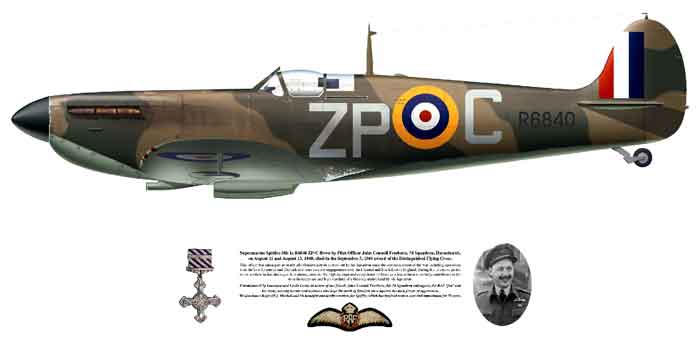
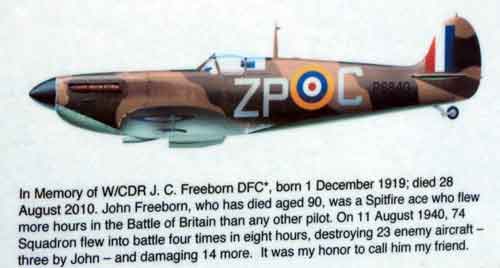
|







